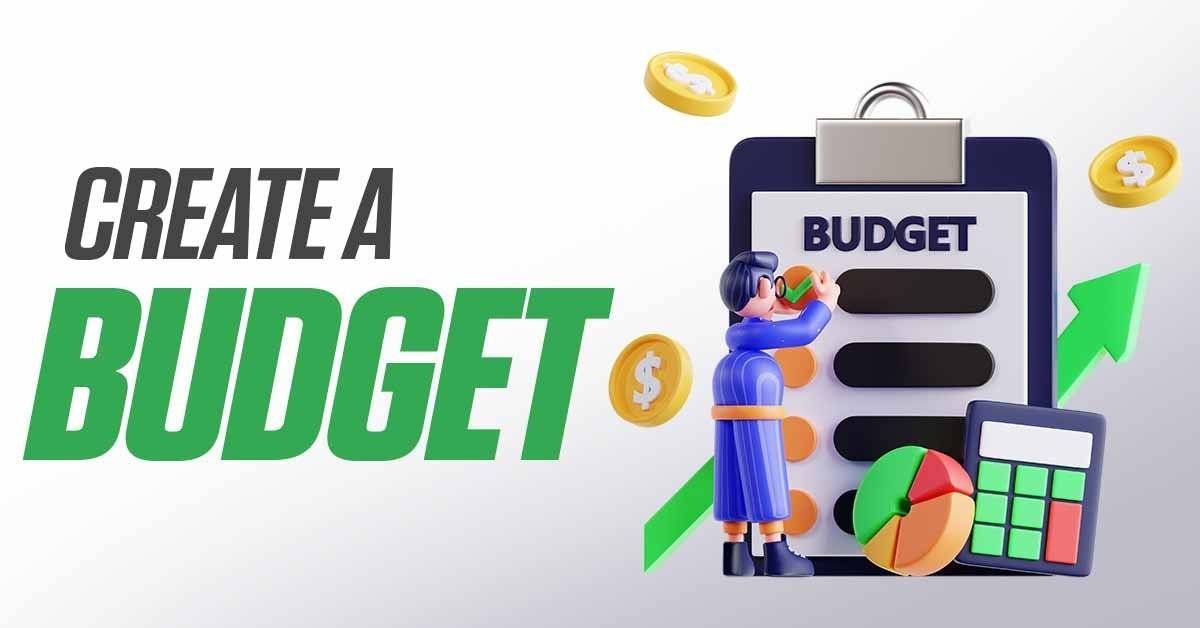Creating and sticking to a budget is a fundamental step towards achieving financial stability and reaching your financial goals. A well-structured budget helps you manage your money efficiently, track your spending, save for the future, and avoid debt. This detailed guide will walk you through the steps to create a budget and provide practical tips on how to stick to it.
Why Budgeting is Important
1. Financial Awareness
Budgeting helps you understand where your money goes each month, making you more aware of your spending habits and financial health.
2. Debt Management
A budget allows you to allocate funds for debt repayment, helping you pay off debts faster and avoid accumulating more.
3. Savings Goals
Budgeting enables you to set aside money for short-term and long-term savings goals, such as an emergency fund, retirement, or a vacation.
4. Stress Reduction
Knowing that your finances are under control can reduce financial stress and provide peace of mind.
Steps to Create a Budget
1. Assess Your Financial Situation
Calculate Your Income
Start by determining your total monthly income. This includes your salary, freelance earnings, rental income, and any other sources of money.
List Your Expenses
Track all your monthly expenses. Categorize them into fixed expenses (rent, utilities, insurance) and variable expenses (groceries, entertainment, dining out).
Analyze Spending Habits
Review your spending habits over the past few months to identify patterns and areas where you can cut back.
2. Set Financial Goals
Determine what you want to achieve with your budget. Your goals can be short-term (saving for a new gadget) or long-term (buying a house, retirement).
SMART Goals
Ensure your goals are Specific, Measurable, Achievable, Relevant, and Time-bound. For example, “Save $500 for an emergency fund in 6 months.”
3. Choose a Budgeting Method
There are various budgeting methods you can choose from. Pick one that suits your financial situation and preferences.
50/30/20 Rule
- 50% for Needs: Allocate 50% of your income to essential expenses like rent, utilities, groceries, and transportation.
- 30% for Wants: Use 30% for non-essential expenses such as dining out, hobbies, and entertainment.
- 20% for Savings and Debt Repayment: Reserve 20% for savings, investments, and paying off debts.
Zero-Based Budget
In a zero-based budget, every dollar of your income is assigned a specific purpose until your income minus expenses equals zero.
Envelope System
Allocate cash for different spending categories and place it in labeled envelopes. Once the cash is gone, you can’t spend any more in that category for the month.
4. Track Your Spending
Use tools and apps to track your spending and ensure you stay within your budget. Popular budgeting apps include Mint, YNAB (You Need a Budget), and EveryDollar.
Manual Tracking
You can also use spreadsheets or a notebook to manually track your income and expenses.
5. Adjust Your Budget
Regularly review and adjust your budget as needed. Life circumstances change, and your budget should be flexible enough to accommodate these changes.
6. Build an Emergency Fund
An emergency fund is crucial for unexpected expenses like medical bills, car repairs, or job loss. Aim to save at least 3-6 months’ worth of living expenses.
7. Automate Your Savings
Set up automatic transfers to your savings account to ensure you consistently save money each month. This reduces the temptation to spend the money elsewhere.
Tips for Sticking to Your Budget
1. Stay Motivated
Remind yourself of your financial goals and the benefits of sticking to your budget. Celebrate small milestones to stay motivated.
2. Limit Credit Card Use
Credit cards can lead to overspending. Use cash or debit cards for everyday purchases to avoid accumulating debt.
3. Cut Unnecessary Expenses
Identify and eliminate non-essential expenses. Cook at home instead of dining out, cancel unused subscriptions, and shop for discounts.
4. Plan for Irregular Expenses
Set aside money for irregular expenses like annual insurance premiums, holidays, or birthdays. This prevents these expenses from derailing your budget.
5. Review Regularly
Regularly review your budget to ensure it aligns with your financial goals and current situation. Make adjustments as needed.
6. Seek Accountability
Share your budgeting goals with a trusted friend or family member who can help you stay accountable. Consider joining a budgeting group for additional support.
7. Educate Yourself
Continue learning about personal finance through books, podcasts, blogs, and courses. The more you know, the better equipped you’ll be to manage your money.
Common Budgeting Mistakes to Avoid
1. Being Unrealistic
Setting unrealistic budget limits can lead to frustration and failure. Be honest about your spending habits and set achievable goals.
2. Not Accounting for All Expenses
Failing to include all expenses can result in overspending. Track every expense, no matter how small.
3. Neglecting Savings
Prioritize saving even if you have debts. Building an emergency fund and saving for the future are essential for financial security.
4. Ignoring Budget Reviews
Regularly review and adjust your budget. Ignoring changes in your financial situation can lead to budget failure.
5. Overspending on Variable Expenses
Variable expenses like dining out and entertainment can quickly add up. Set limits and stick to them to avoid overspending.
Conclusion
Creating and sticking to a budget is a powerful tool for achieving financial stability and reaching your financial goals. By assessing your financial situation, setting realistic goals, choosing a budgeting method, and tracking your spending, you can take control of your finances. Stay motivated, avoid common mistakes, and regularly review your budget to ensure long-term success. With discipline and commitment, you can achieve your financial dreams and enjoy a more secure financial future.
By following this comprehensive guide, you’ll be well on your way to mastering the art of budgeting. Start today, and take the first steps towards financial freedom and security.
